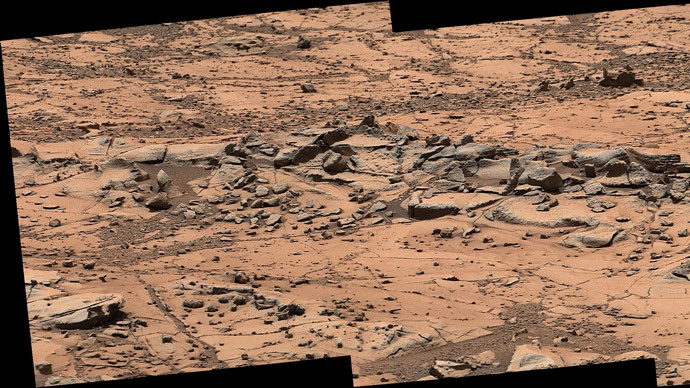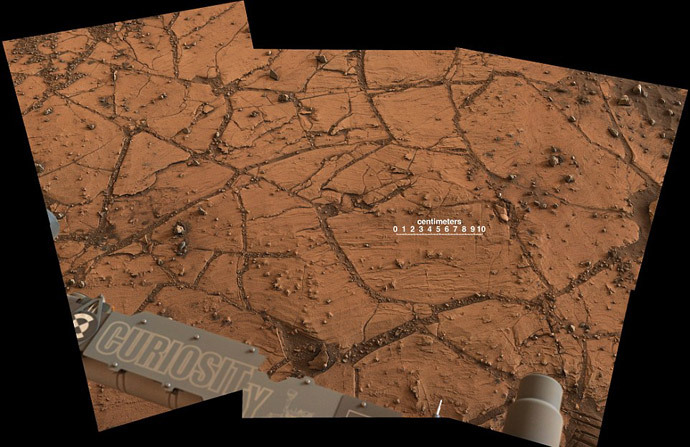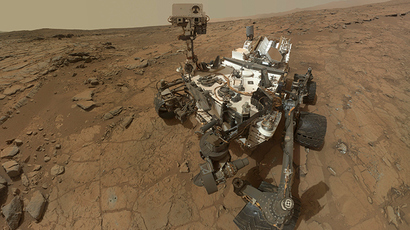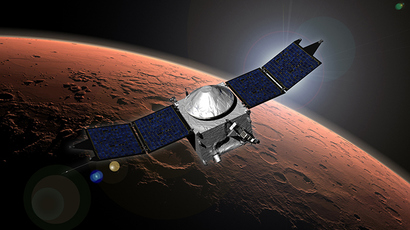NASA rover to probe mysterious 'pink cliffs' to grasp Mars formation

NASA’s Mars rover appears to have struck gold. A strange ledge at the base of Mt. Sharp exposes sediment layers that could hold clues to how the entire planet was formed. They are said to be the original reason for the agency’s choice for survey location.
Dubbed the 'pink cliffs', the ledge, which is about 1 meter (3 feet) long, is also resistant to erosion in a way none of the surrounding areas are. This affords scientists a peek at the changing nature of Mars’s climate overt time, providing crucial hints as to everything else.
The idea to study the formation in more detail came after a second 'walkabout'of the outcrop at the base of the mountain.
"Some parts [were] finely layered and fine-grained, others more blocky with erosion-resistant ledges," Curiosity deputy project scientists Ashwin Vasavada of NASA’s Jet Propulsion Laboratory (JKL) said.
“There’s a lot to study here,” he said, outlining differences in cementation and mineral veins, some of them visible to the naked eye. The second walkabout will make use of Curiosity’s close-up camera.
The pictures taken by the Mars rover combine several stills taken from Curiosity’s Mastcam on October 7, 2014. The images have been slightly doctored to depict in truer detail how the rock formation would look under daylight on Earth.
READ MORE: Mars Curiosity rover reaches final
destination
"The variations we've seen so far tell us that the environment was changing over time, both as the sediments were laid down and also after they hardened into bedrock," Vasavada said. "We have selected targets that we think give us the best chance of answering questions about how the sediments were deposited – in standing water? Flowing water? Sand blowing in the wind? – and about the composition during deposition and later changes."

This mosaic of sediment layers is considered by JPL to be one of the main reasons for choosing Mt. Sharp as their destination for drilling.
The mission has already been studying a similar soil sample gathered at the Pahrump Hills in September, close to the current outcrop.
After it’s done with the current study of the Pink Cliffs, Curiosity scientists will decide if a third pass-through is necessary for the purpose of drilling through some of the formations to later study them in lab conditions.
The rover embarked on its study of Mars in August 2012, with the purpose of answering some of the most pressing questions humanity ever posed – was there life on Mars; could it have infected Earth as well, and what the weather was like there once.
Already we’ve come very far in our studies: Curiosity has been studying a lake bed said to be over three billion years old and containing chemical energy and ingredients favorable to microbial life.
In its second year the probe drove about eight kilometers (five miles) from its landing spot at Yellowknife Bay to Mount Sharp.














